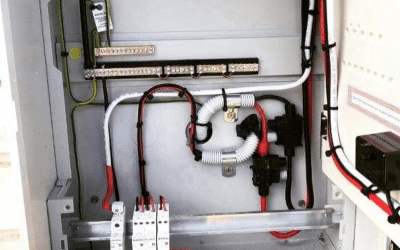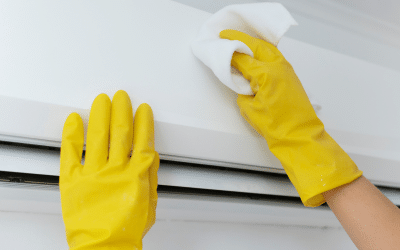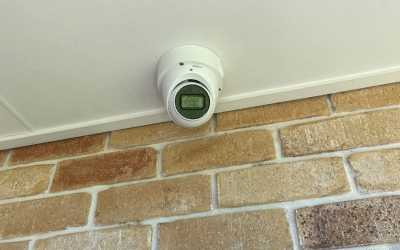Understanding Electrical Inspections
Electrical inspections are comprehensive evaluations of the electrical system within a home, encompassing a detailed examination of wiring, circuits, appliances, and safety devices. These inspections are not merely routine check-ups; they play a vital role in ensuring the safety, efficiency, and compliance of a home’s electrical infrastructure with standards such as AS/NZS 3760:2010 and AS/NZS 3012:2010, especially after any renovations or modifications.
The scope of an electrical inspection is extensive. It involves a systematic review of the electrical system to ensure everything is up to current standards and functioning correctly. This includes checking the condition of wiring, the operation of circuit breakers, the integrity of connections, and the safety of electrical fixtures. Importantly, these inspections also assess the compatibility of the electrical system with the demands of modern appliances and technology.
Why Electrical Inspections are Necessary
Electrical inspections are essential for several reasons, the key among them being the identification of potential hazards. Over time, wiring can deteriorate, connections can become loose, and circuit breakers may malfunction. These issues, if unnoticed, can lead to serious problems such as electrical fires or electrocution. Regular inspections help in detecting such risks early, ensuring the safety of the occupants.
Compliance with safety codes and regulations is another critical aspect of electrical inspections. Australia’s electrical standards and regulations are designed to ensure the safety and functionality of electrical systems. These standards evolve, and regular inspections ensure that your home’s electrical system adheres to the latest requirements. This compliance is not just about adhering to legalities; it is about safeguarding the well-being of individuals residing on the property.
The Process of Electrical Inspections
Understanding what happens during an electrical inspection can help homeowners prepare for it. Typically, the process involves several key steps:
- Visual Assessment: The electrician begins with a visual examination of the property, looking for any visible signs of wear and tear, damage, or outdated systems.
- Testing Electrical Components: Using specialised tools, the electrician tests various components like outlets, switches, and circuit breakers to ensure they are functioning correctly and safely.
- System Evaluation: This involves checking the electrical panel for proper operation, ensuring that circuits are not overloaded, and verifying that the system meets current safety standards.
- Safety Checks: Particular attention is paid to safety devices such as smoke detectors and safety switches (RCDs), ensuring they are present where required and functioning correctly.
- Reporting: At the end of the inspection, the electrician provides a detailed report outlining the condition of the electrical system, any issues found, and recommendations for repairs or upgrades.
Homeowners can expect these inspections to be thorough, as they are critical in identifying potential problems that might not be visible to the untrained eye. The process is designed to be comprehensive yet non-intrusive, with minimal disruption to the household. By understanding what to expect, homeowners can better appreciate the importance of these inspections and take proactive steps to maintain the safety and efficiency of their electrical systems.
Key Benefits of Regular Electrical Inspections
Regular electrical inspections are more than just a compliance requirement; they offer several significant benefits, paramount among them being the enhancement of safety and efficiency in homes. These inspections act as a frontline defence against electrical accidents, help in the early detection of potential issues, and can lead to increased energy efficiency, which may result in reduced energy bills.
Safety First: Avoiding Electrical Hazards
The primary benefit of regular electrical inspections is the prevention of common electrical accidents. Faulty wiring, overloaded circuits, and outdated electrical components are common culprits in home electrical accidents, which can lead to dangerous situations like electric shocks or fires. Regular inspections identify these hazards before they escalate into serious incidents. Also, similar to safety switch testing in commercial settings, inspections at home ensure the proper functioning of safety devices.
An electrical inspection also ensures the safety of appliances and systems within the home. This involves checking whether appliances are functioning properly and are suitable for the existing electrical system. For instance, older homes might not be equipped to handle the power needs of modern, high-consumption appliances, posing a risk of overloading circuits. Regular inspections can detect such mismatches and recommend appropriate upgrades or solutions.
Enhancing Energy Efficiency
Another significant advantage of regular electrical inspections is the role they play in identifying areas of energy wastage. Over time, electrical systems can develop inefficiencies, such as phantom loads, where devices consume power even when not in use. An inspection can uncover such issues, allowing for corrective measures to be implemented.
Following an inspection, homeowners often receive recommendations on how to enhance their energy efficiency. This can include advice on using energy-efficient appliances, optimising the usage of heating and cooling systems, and implementing smart home technologies. These recommendations not only contribute to a reduction in energy consumption but also lead to noticeable savings on energy bills.
By addressing these aspects, regular electrical inspections provide a dual benefit: they ensure the safe operation of a home’s electrical system while also promoting efficient energy usage. This not only contributes to a safer living environment but also supports sustainable practices and financial savings in the long run.
The Frequency of Electrical Inspections
Determining the frequency of electrical inspections is essential for maintaining the safety and efficiency of a home’s electrical system. While there are standard recommended intervals, these can vary depending on the age of the home, its electrical usage, and any recent modifications or additions to the electrical system.
For most homes, a comprehensive electrical inspection every three to five years is advisable. However, special considerations are needed for certain types of properties. Older homes, particularly those over 25 years old, may require more frequent inspections. This is due to the likelihood of outdated wiring systems, which can become hazardous over time. In contrast, new constructions might benefit from an initial inspection after installation and then follow the standard interval, ensuring that the modern electrical systems are functioning as intended from the outset.
Signs You Need an Electrical Inspection
Apart from routine inspections, there are certain warning signs that homeowners should be aware of, which indicate the need for an immediate electrical inspection. These include:
- Frequent Circuit Breaker Trips: If you find your circuit breaker tripping often, it’s a clear sign that your home’s electrical load is more than what the system can handle.
- Flickering or Dimming Lights: This can be a symptom of a poor connection and could lead to more serious electrical issues.
- Buzzing Sounds or Burning Smell: These are alarming signs and might indicate a serious electrical fault that requires immediate attention.
- Outlets or Switches Feeling Warm to the Touch: This unusual symptom could suggest an underlying issue with your wiring or electrical circuits.
- Use of Multiple Extension Cords: Over-reliance on extension cords can be a sign that your home does not have sufficient outlets to meet your needs, warranting an inspection.
Distinguishing between routine checks and emergency inspections is crucial. Routine checks are part of regular home maintenance, aimed at ensuring everything is up to code and functioning correctly. Emergency inspections, on the other hand, are prompted by specific issues or concerns that pose immediate risks, such as signs of electrical failure or after a major weather event that could have impacted the electrical system.
In summary, staying on top of electrical inspections is a key aspect of home maintenance. Understanding the recommended frequency and being alert to the signs that necessitate an immediate inspection can help maintain a safe and efficient electrical system in your home.
What Inspectors Look For
When conducting an electrical inspection, professionals focus on several key areas and components to ensure the safety and efficiency of a home’s electrical system. This comprehensive check is critical in identifying and addressing any electrical issues that could pose risks to the household.
Key areas inspected include the electrical panel, wiring systems, outlets and switches, grounding systems, surge protection, and the functionality of safety devices like circuit breakers and smoke detectors. Inspectors also evaluate the overall condition of the electrical system, checking for signs of wear and tear, outdated components, or DIY fixes that don’t meet the current Australian standards.
Addressing Common Electrical Issues
Throughout the inspection process, inspectors often identify common electrical issues. These can range from minor concerns to major safety hazards. Some of the most frequent issues include:
- Outdated Wiring: Especially in older homes, wiring that is not up to current standards can be a significant risk.
- Overloaded Circuits: This occurs when too many devices are connected to a single circuit, posing a fire hazard.
- Improperly Installed Electrical Systems: DIY installations or previous work done by non-professionals can lead to dangerous setups.
- Faulty Switches and Outlets: Worn-out or improperly installed switches and outlets can be a fire risk or cause electric shocks.
When such issues are identified, the importance of professional intervention cannot be overstressed. Professional electricians can provide not only the necessary repairs but also advice on preventive measures to avoid future problems. Solutions might include rewiring parts of the home, upgrading the electrical panel to accommodate more circuits, or replacing old outlets and switches with newer, safer models.
The role of an electrical inspector goes beyond mere identification of problems. They play a crucial role in guiding homeowners towards maintaining a safe and efficient electrical system. This not only ensures the safety of the residents but also contributes to the longevity and reliability of the home’s electrical infrastructure. Professional intervention is key in addressing these issues, ensuring that any repairs or upgrades are done in compliance with the latest safety standards and regulations.
Post-Inspection: Taking Action
After an electrical inspection, understanding and acting upon the inspection report is crucial. This report serves as a roadmap, highlighting areas that need attention and recommending actions to rectify any identified issues. The clarity and detail in the report are essential for homeowners, as it guides them on the necessary steps to take to ensure their electrical system is safe, compliant, and efficient.
The report typically outlines the condition of the electrical system and points out any immediate safety concerns, potential hazards, and areas of non-compliance with current safety standards. It may also suggest improvements in energy efficiency and system upgrades. For homeowners, the key is to comprehend these findings and prioritise the recommended actions.
Upgrades and Repairs
Based on the inspection report, certain common upgrades and repairs might be necessary. These could include:
- Rewiring or Replacement of Outdated Systems: Especially in older homes, replacing old and potentially hazardous wiring is a common recommendation.
- Upgrading the Electrical Panel: To accommodate modern electrical demands, upgrading to a higher-capacity panel may be suggested.
- Installation of Safety Devices: This includes additional smoke detectors, safety switches (RCDs), and surge protectors.
- Repair or Replacement of Faulty Outlets and Switches: Ensuring that all switches and outlets are in good working condition and meet current standards.
Timely action on these repairs and upgrades is not just a matter of meeting regulatory standards but is primarily about ensuring the safety of the occupants. Delaying these actions can lead to increased risks, including electrical fires, shocks, or system failures.
Moreover, in some cases, these upgrades can lead to improved energy efficiency, potentially reducing electricity bills and contributing to a more environmentally friendly home.
In conclusion, the period following an electrical inspection is critical. Homeowners should work closely with professional electricians to understand their reports, prioritise the necessary actions, and implement the recommended upgrades and repairs. This proactive approach ensures the safety, compliance, and efficiency of the home’s electrical system.
Electrical Inspections and Real Estate Transactions
Electrical inspections play a crucial role in real estate transactions, influencing both the buying and selling process. For sellers, it’s about presenting their property in the best possible light, while for buyers, it’s about ensuring they’re making a safe and sound investment. These inspections can significantly impact the property’s value and may even affect insurance policies, given that homes with up-to-date and safe electrical systems are often viewed as lower risks.
For Sellers: Preparing Your Home for Sale
For sellers, preparing for an electrical inspection before listing their property is a wise move. This step is not just about compliance; it’s an opportunity to enhance the appeal and potentially increase the value of the property. A favourable electrical inspection report can be a powerful selling point, as it assures potential buyers of the safety and soundness of the electrical systems.
Addressing any electrical issues before listing the property can also streamline the selling process. It reduces the likelihood of negotiations getting bogged down by concerns over electrical safety and compliance. Moreover, it can prevent unexpected delays or price reductions resulting from issues discovered during a buyer-initiated inspection.
For Buyers: Ensuring Safety Before Purchase
For buyers, insisting on an electrical inspection before finalising a property purchase is a crucial step. It ensures that they are not inheriting any hidden problems or safety hazards. This is especially important in older properties where the electrical systems might not have been updated to current standards.
An electrical inspection can also be a valuable tool for negotiating the property price. If the inspection uncovers issues, buyers can use these findings to negotiate a lower price, or request that the seller addresses these problems before the sale is finalised. This not only ensures that the buyer is getting a fair deal but also that the property they are investing in is safe and up to code.
In conclusion, electrical inspections are an integral part of real estate transactions, providing benefits and security to both buyers and sellers. They ensure that properties meet safety standards, offer a clear picture of the property’s condition, and can even influence the property’s market value and insurance considerations.
DIY vs Professional Inspections
While DIY (Do-It-Yourself) approaches have gained popularity in many home improvement areas, electrical inspections are a domain where professional expertise is not just beneficial but essential. Understanding the limitations of DIY electrical checks is crucial for homeowners, as electrical systems are complex and can pose significant risks if not handled properly.
DIY electrical checks are usually limited to basic observations like checking for visible wire damage, testing smoke alarms, or ensuring that outlets are not overloaded. However, these checks are far from comprehensive. They lack the depth and technical expertise required to identify underlying electrical issues, such as faults in internal wiring, issues with the electrical panel, or compliance with current safety standards and regulations.
Choosing the Right Professional for Inspections
When it comes to professional electrical inspections, selecting the right service is crucial. Homeowners should consider several criteria to ensure they are engaging a qualified and experienced professional. Firstly, the electrician or electrical inspection service should be fully licensed and insured, adhering to Australian standards and regulations. This ensures that the inspection will be thorough and compliant with national safety norms.
Experience and specialisation are also key factors. An experienced electrician brings a depth of knowledge that can be invaluable in identifying and addressing complex electrical issues. Additionally, it’s beneficial to choose a professional who specialises in residential electrical systems, as they will have a more nuanced understanding of home electrical needs and potential issues.
Furthermore, reputation and recommendations can guide homeowners in making an informed choice. Reviews and testimonials from previous clients can provide insights into the quality of service and reliability of the electrician or company.
In summary, while DIY checks can be helpful for basic monitoring, professional inspections are indispensable for a comprehensive assessment of a home’s electrical system. Choosing the right professional is crucial, and homeowners should look for licensed, experienced, and reputable electricians to ensure their homes are safe and electrically sound.
Legal and Compliance Aspects
Navigating the legal and compliance aspects of electrical systems in homes is a critical component of electrical safety and responsibility. Understanding and adhering to local regulations and codes is not just a matter of legal compliance; it’s about ensuring the safety and well-being of residents and the broader community.
In Australia, electrical systems and works are governed by a set of stringent regulations and codes, which vary slightly between states and territories. These regulations are designed to ensure that all electrical work meets a high standard of safety and quality. Compliance with these standards is not optional; it’s a legal requirement. The Australian Standards (AS/NZS 3000), commonly known as the Wiring Rules, provide comprehensive guidelines for electrical installations.
Electrical inspections play a crucial role in ensuring compliance with these regulations. They are necessary not only for the initial installation but also for ongoing maintenance and any subsequent modifications or renovations involving electrical systems. Failure to comply with these standards can lead to serious legal and safety implications. Non-compliant electrical work can result in fines, and in severe cases, criminal charges. Moreover, it can pose significant risks, such as electrical fires or electrocution.
For homeowners, it’s essential to engage licensed and qualified electricians who are familiar with the local regulations and codes. These professionals ensure that all electrical work, whether it’s installation, maintenance, or repairs, is compliant with the current legal requirements. They also stay updated with any changes in regulations, ensuring that the electrical work in your home remains compliant over time.
In addition to safety and legal compliance, proper electrical work and regular inspections can impact insurance policies. Many insurance companies require proof that electrical systems are compliant with national and local codes to provide or maintain coverage. Non-compliance can lead to denied insurance claims in the event of electrical accidents or damage.
In summary, the legal and compliance aspects of electrical inspections are not to be taken lightly. Adhering to local regulations and codes is crucial for ensuring safety, avoiding legal repercussions, and maintaining valid insurance coverage. Homeowners should prioritise compliance as an integral part of responsible and safe home management.
Future of Electrical Inspections
The landscape of electrical inspections is continually evolving, driven by advances in technology and a growing emphasis on safety and energy efficiency. Emerging trends and modern tools are set to revolutionise how electrical inspections are conducted, enhancing their effectiveness and accuracy.
One of the key trends in the future of electrical inspections is the integration of smart technology. The use of smart sensors and Internet of Things (IoT) devices in electrical systems allows for continuous monitoring of electrical circuits in real-time. This technology can detect anomalies such as overloads or unusual patterns of electricity usage, often before they become serious issues. This proactive approach to monitoring can significantly reduce the risks of electrical failures and accidents.
Another emerging technology in this field is the use of thermal imaging cameras. These devices enable electricians to see beyond the capabilities of the naked eye, identifying hot spots caused by loose connections, overloaded circuits, or other issues within walls and electrical panels. This non-invasive method allows for a more thorough inspection without the need for disruptive dismantling of structures.
Augmented reality (AR) and virtual reality (VR) are also finding applications in electrical inspections. These technologies can provide electricians with enhanced visualisation of electrical systems and potential hazards. They can also be used for training purposes, offering a safe and immersive environment for electricians to hone their skills.
Artificial Intelligence (AI) and machine learning algorithms are being developed to analyse data collected from electrical systems. These technologies can predict potential issues and suggest maintenance or upgrades, making the inspection process more efficient and predictive.
Furthermore, the advent of drones equipped with cameras and sensors offers a new frontier for inspecting hard-to-reach areas, like rooftops or large industrial spaces, ensuring thorough and safe inspections.
In summary, the future of electrical inspections is poised to be more technologically driven, offering enhanced safety, efficiency, and accuracy. These advancements will not only benefit electricians by making their jobs safer and more efficient but will also provide homeowners and businesses with greater peace of mind regarding the safety and reliability of their electrical systems. The integration of these modern tools and techniques represents a significant step forward in the field of electrical safety and maintenance.
Tips for Homeowners
Preparing for an electrical inspection and maintaining ongoing safety practices is crucial for homeowners to ensure their property’s electrical system is safe, efficient, and compliant with regulations. Here are some practical tips to help homeowners in this regard:
1. Preparing for an Electrical Inspection:
-
- Access: Ensure that all areas with electrical systems, like the electrical panel, outlets, and appliances, are easily accessible for the inspector.
- Documentation: Have any records of previous electrical work, upgrades, or inspections handy, as these can provide useful information to the inspector.
- Safety Checks: Conduct basic checks, such as ensuring smoke detectors are working and checking for any visible wire damage or loose outlets.
- List Concerns: If you have noticed any issues, like flickering lights or circuit breaker trips, make a note to discuss these with the inspector.
2. Ongoing Maintenance and Safety Practices:
-
- Regular Checks: Periodically test safety devices like smoke detectors and Residual Current Devices (RCDs) to ensure they are functioning correctly.
- Monitor for Warning Signs: Be vigilant for signs of electrical problems, such as burning smells, buzzing noises, or frequent tripping of circuit breakers.
- Safe Usage: Avoid overloading outlets, using too many extension cords, or using appliances with frayed cords, as these can pose risks.
- Professional Repairs: If repairs or upgrades are needed, always use a licensed electrician. DIY electrical work can be dangerous and may not comply with safety standards.
- Stay Informed: Keep up to date with local electrical codes and safety standards to ensure your home remains compliant.
By following these tips, homeowners can significantly contribute to the safety and efficiency of their home’s electrical system. Regular maintenance and awareness are key to preventing electrical hazards and ensuring a safe living environment. Remember, electrical safety is an ongoing process and not just a one-time event.
Key Takeaways
In summary, the importance of regular electrical inspections in maintaining a safe and efficient home cannot be understated. These inspections are a vital aspect of responsible homeownership, offering numerous benefits that ensure the well-being of residents and the longevity of the property’s electrical infrastructure.
- Safety and Prevention: Regular electrical inspections are essential for identifying potential hazards such as outdated wiring, overloaded circuits, or faulty equipment. Addressing these issues promptly helps in preventing accidents like electrical fires and electric shocks, thereby ensuring the safety of the home’s occupants.
- Compliance and Legal Responsibility: Staying compliant with local electrical codes and regulations is not only a legal requirement but also a critical safety measure. Regular inspections ensure that a home’s electrical system meets the current safety standards, thereby avoiding legal complications and ensuring eligibility for insurance claims.
- Energy Efficiency and Cost Savings: Electrical inspections can lead to increased energy efficiency by identifying areas where power is being wasted. Recommendations provided during inspections, such as upgrading to energy-efficient appliances or repairing faulty systems, can lead to significant savings on energy bills.
- Maintaining Property Value: For homeowners, especially those considering selling their property, having a recent electrical inspection report can enhance the property’s appeal to potential buyers. It assures them of the property’s safety and compliance, potentially increasing its market value.
- Future-Proofing the Home: As technology advances, so do the demands placed on a home’s electrical system. Regular inspections ensure that the system is capable of supporting modern appliances and technology, keeping the home up-to-date and functional.
Conclusion
In conclusion, the critical role of electrical inspections in ensuring home safety cannot be overstated. These inspections serve as a fundamental pillar in maintaining not only the safety and integrity of a home’s electrical system but also in safeguarding the well-being of its occupants. They are an indispensable tool in identifying potential hazards, ensuring compliance with safety regulations, and enhancing the efficiency of the home’s electrical infrastructure.
For homeowners, adopting a proactive approach to electrical safety is imperative. Regular electrical inspections, coupled with ongoing maintenance and adherence to safety practices, form the cornerstone of a safe and efficient home environment. These measures are not just about meeting legal requirements; they are about creating a space where safety is paramount, and efficiency is optimized.
Electrical inspections, therefore, should be viewed not as an optional task, but as an essential aspect of responsible homeownership. By embracing these inspections and acting on their findings, homeowners can enjoy peace of mind, knowing that their homes are not only compliant with safety standards but are also equipped to meet the challenges of modern electrical demands.
In a world where technology is ever-evolving and the demands on home electrical systems are continually increasing, the importance of staying vigilant with electrical safety cannot be understated. Homeowners are encouraged to view electrical inspections as a vital investment in their property’s safety, efficiency, and future readiness, ensuring a secure and comfortable environment for all who dwell within.
FAQ’s
What is a Home Electrical System and How Does it Work?
A home electrical system is the network responsible for distributing electrical power throughout your home. It comprises components like the service head and meter, main distribution board, circuits and wiring, earthing system, and outlets. This system ensures a constant flow of electricity to power your appliances and gadgets.
What Are the Main Components of a Home Electrical System?
The key components include the service head, where electricity enters from the grid; the main distribution board, which divides power into circuits; circuits and wiring for distributing power; the earthing system for safety; and outlets and switches for accessing electricity.
How Have Home Electrical Systems Evolved Over Time?
Home electrical systems have evolved from knob and tube wiring in the 1800s to aluminium wiring in the 1960s, and now to modern grounded systems. Each stage brought improvements in safety and efficiency, catering to the increasing electrical demands of households.
How Do I Identify and Address Issues in My Home's Electrical Wiring?
Common signs of wiring issues include flickering lights, warm or discoloured switches, frequent blown fuses, and a burning smell. Addressing these issues may require an inspection by a licensed electrician, with solutions ranging from simple repairs to complete rewiring.
Why is It Important to Upgrade Electrical Outlets and Switches?
Upgrading is crucial for maintaining safety and efficiency. Indicators for upgrades include aged outlets, visible damage, frequent tripping, and the absence of grounding or GFCIs, especially in moisture-prone areas.







